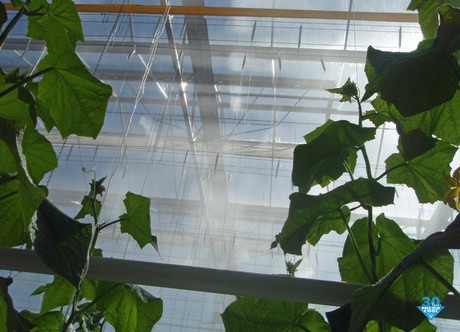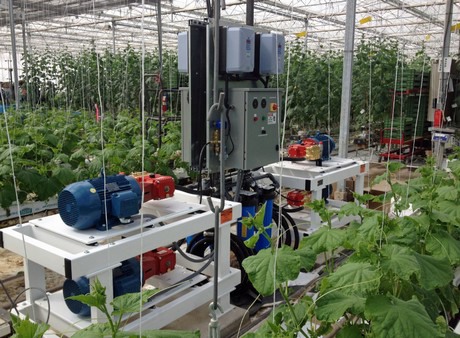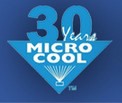Adiabatic cooling
Fogging systems work on the principle of adiabatic cooling, explained MicroCool's Mark Stanley. They create a fine fog by forcing pressurized water through a small nozzle. In the case of MicroCool's fogging system, the water pressure is around 70 bar with a nozzle opening of 200 micrometers. The water pressure and size of the nozzle force out billions of water droplets that are 10 microns in diameter, or about one-tenth the diameter of a human hair. Because a smaller droplet has a larger surface area relative to volume, the droplets float in the air and evaporate quickly – much faster than larger water droplets that fall faster and take longer to evaporate. Through evaporative cooling, the greenhouse temperature drops. The smaller the droplet, the greater the cooling effect.
“To be most effective the water must flash-evaporate before it reaches the plant,” said Stanley, sales and marketing manager for MicroCool. “The lower the relative humidity inside the greenhouse, the faster the temperature will drop, so it's better to bring in dry air to keep the relative humidity down, because the degree to which you can cool the greenhouse gets lower when you have a higher relative humidity and the fog cannot flash evaporate as quickly.” In the past, not controlling the humidity and air quality inside the greenhouse made for lacklustre performances from early fogging systems. But Stanley explained that advents in climate-control computers have vastly improved the quality of modern systems.
“Computers can selectively shut greenhouse vents to create low-pressure inside the greenhouse to draw in dry air at a high velocity at the same time that wet air is extracted,” explained Stanley. “That's why it's so important that our system works with a climate-control computer, otherwise you won’t get the right combination of factors necessary for effective cooling.” Early systems were also plagued with nozzles clogged by minerals in the water, but that problem has also been addressed in modern setups.
“A lot of bad reports about fogging systems arose from water treatment,” said Stanley. “The cost of reverse osmosis has come down a lot from the 80's and 90's, and even with the small diameter of our nozzles, lines don't get clogged with minerals.” Reverse osmosis also keeps out minerals that could accumulate on the fruit and plant leaves.
Relative humidity
“The problems people used to have with fogging systems were a product of bad integration and inadequate water treatment,” said Stanley. “But we do a lot of things differently now, and people are happy with the results.” He added, however, that the system is not ideal for all climates. Because high relative humidity blunts the system's cooling effect, growers in dry areas can benefit the most from the system.“The high humidity point and the high temperature point never occur at the same time. We are only interested in the humidity level when the temperature is at it’s highest. In the Netherlands, for example, temperatures rise during the day, but the peak doesn't last long, while in dry climates like California, Texas and the Middle East, it's dry, and peak temperatures make fogging very effective,” said Stanley. “Though, in the Netherlands, the system can also be used very well for humidification in the winter period.”

Village Farms & Windset
Some growers have been sufficiently convinced of fogging's benefits to install systems in their greenhouses. Village Farms and Windset, for example, have employed the system, according to Stanley, as well as several other large growers. Current prices for a system are at about five dollars per square meter of greenhouse area, but with ongoing research that continues to bring that cost down, Stanley thinks more growers will see the benefits of fogging.“We've put fogging systems in every kind of place since I started with MicroCool in 1982,” said Stanley. “We even put one on a space shuttle, and we hope to continue to give growers the tools they need to grow their crops better.”
 For more information:
For more information: MicroCool
Mark Stanley
+1-760-834-3345
mark.stanley@microcool.com
www.microcool.com
By Carlos Nunez & Boy de Nijs
